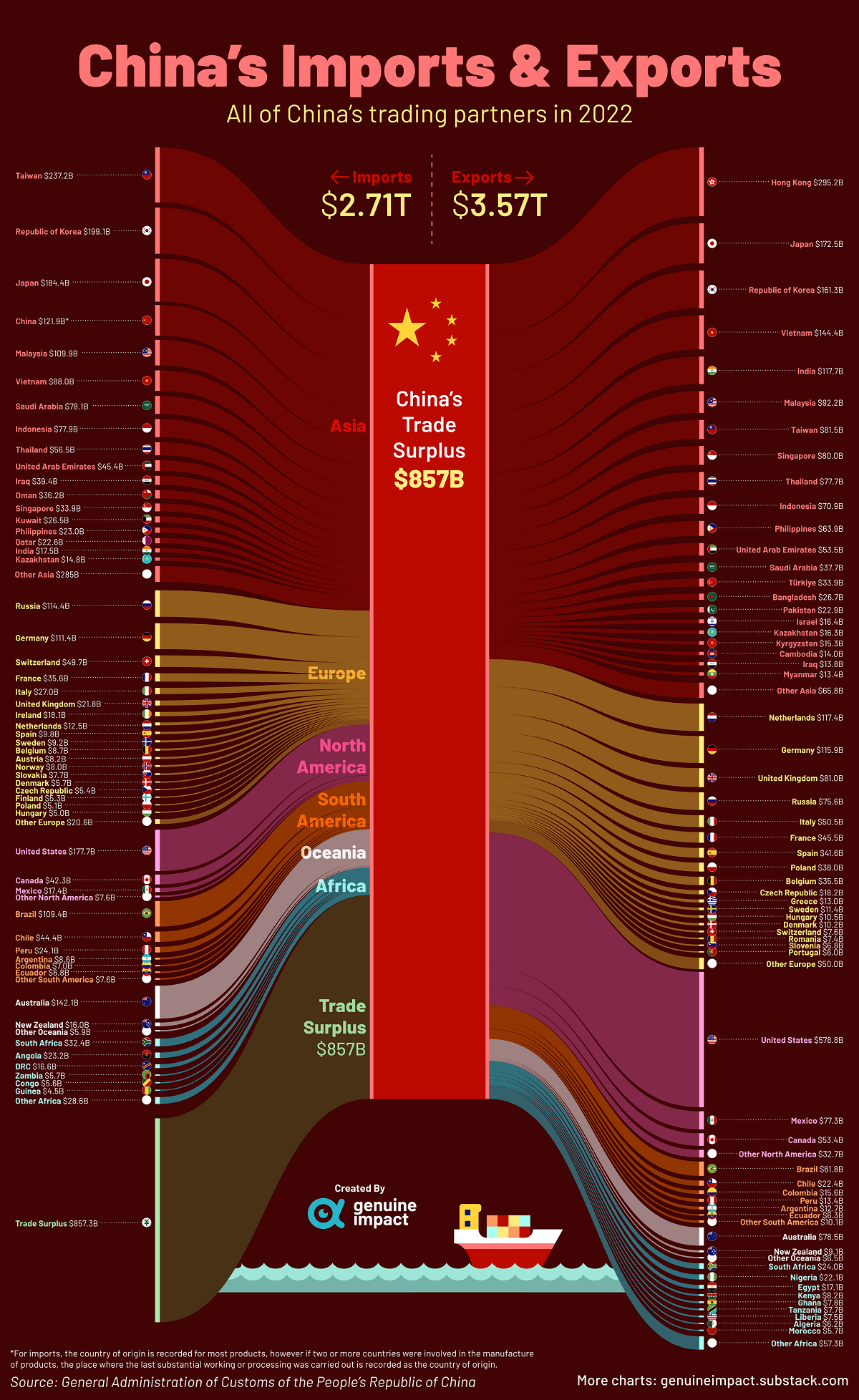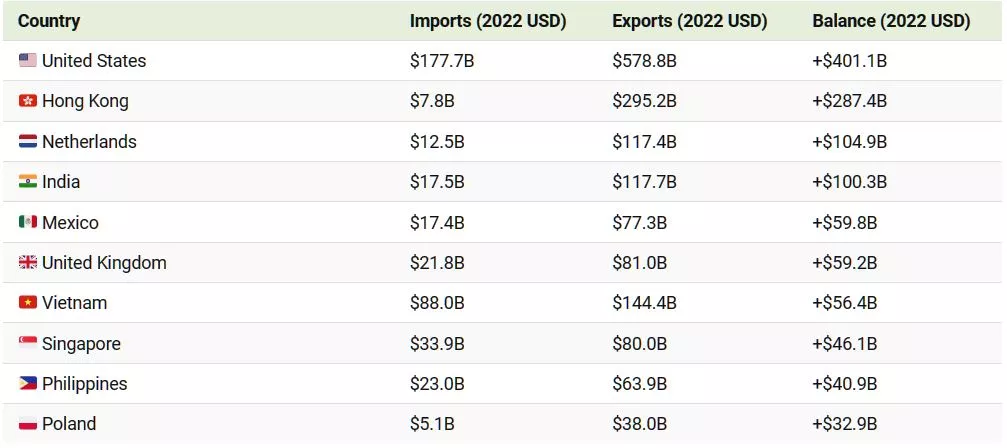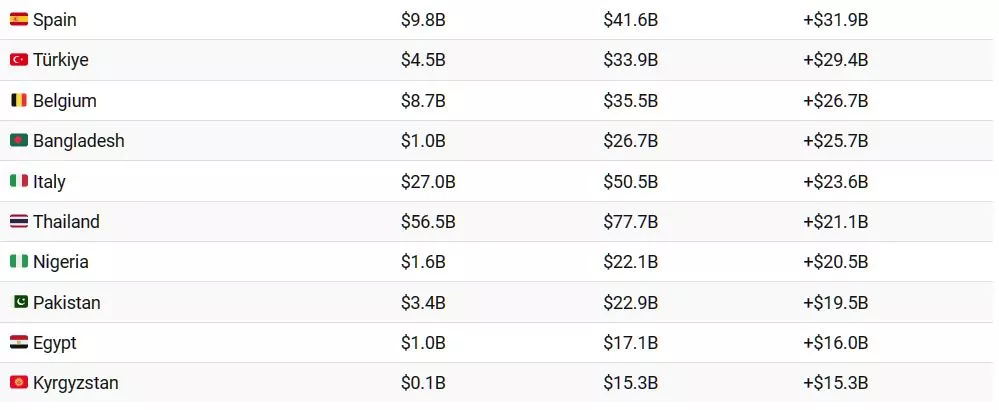Visualizing All Of China’s Trade Partners
China stands as a formidable player in the global trade arena, wielding its influence as the world’s largest goods exporter.

With a complex network of trade partnerships spanning more than 200 countries, regions, and territories, the world’s second-largest economy has significant economic relationships with both allies and adversaries.
By using 2022 trade data from China’s General Administration of Customs, this visualization from Truman Du breaks down the nation’s top trading partners through imports and exports by destination.
China’s Imports and Exports by Country in 2022
Over the course of 2022, China saw exports totaling $3.57 trillion and imports totaling $2.71 trillion, giving it a massive trade surplus of $857 billion.

Below are the top twenty destinations.


China had individual trade surpluses with the overwhelming majority of its trade partners: 174 of the 234 countries and territories listed.
These trade surpluses are especially visible in China’s trade relationships with many of the world’s largest economies, including the U.S. and India, with $401.1 billion and $100.3 billion surpluses respectively.
Meanwhile, a good sum of the country’s trade deficits are with major Asian economies. Its largest deficit is with Taiwan, primarily coming from integrated circuit imports. China also has deficits with Japan (-$11.9 billion) and South Korea (-$37.8 billion), the region’s second and fourth-largest economies respectively, largely due to electronics and machinery imports.
The country’s other trade deficits stem from fulfilling strategic needs. For example, China has deficits with oil-producing countries like Russia and Saudi Arabia. It also has a trade deficit with Australia, a key supplier of raw goods such as iron, gold, lithium, and liquefied petroleum gas.
China’s Evolving Trade Partner Relationships
China’s trade relationships extend far beyond just economic considerations; they reflect historical, geopolitical, and strategic factors as well.
Taiwan’s major role in the semiconductor market, for example, makes it both a valuable trade partner and a contentious rival. China considers Taiwan a part of its territory, while Taiwan operates as a separate, self-governed entity.
Likewise, China’s increasing investments in infrastructure across parts of Asia and Africa are starting to reflect growing trade balances with developing countries set to become major trade partners in the future.
As the Chinese economy evolves (and potentially weakens), its relationships with both allies and potential enemies may only grow more complex.
More By This Author:
Visualizing The Future Global Economy By GDP In 2050U.S. Corporate Bankruptcies On The Rise
The 50 Most Valuable Companies In The World In 2023



